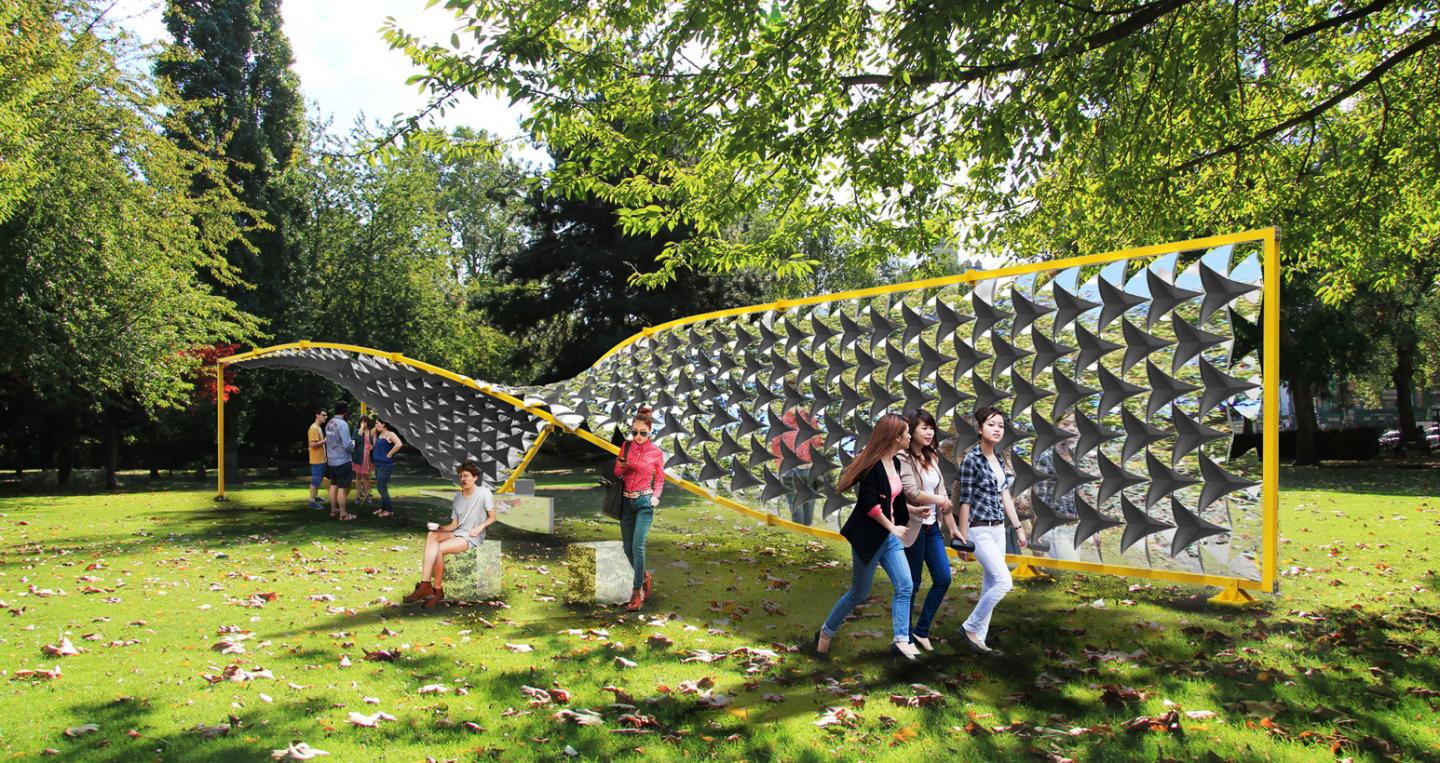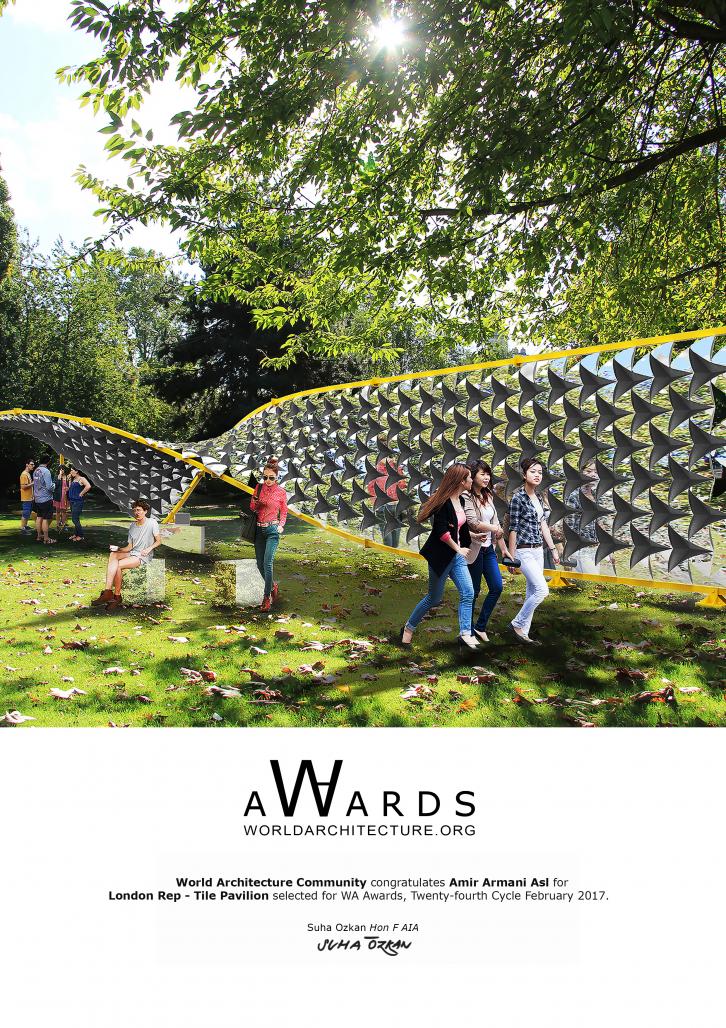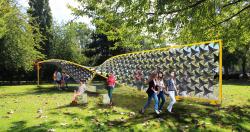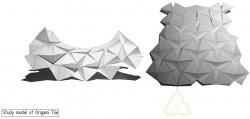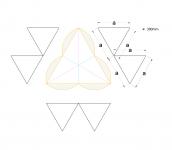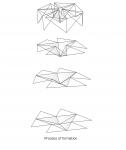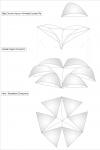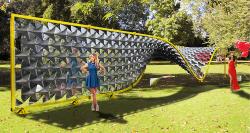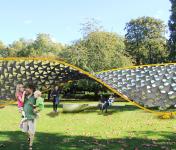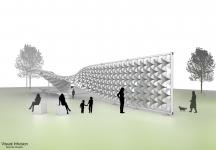Rep- Tile / Infusion Pavilion
Origami double sided textile has a reflecting effect from the outside as an installation pavilion and on the other hand an upside down close up reflection from the inside. The outside stands as an altogether chromic “Rep-Tile”! Inside-out users will be experiencing a twisting textile fabric with an unordinary sense of surface. The concave (from the inside) / convex (from the outside) tiles, visualize an exaggerated distortion of the surroundings and users in a playful way. This is a memorable state to interact with this mind blowing tiling phenomenon.
From St John’s church to V&A museum of childhood there is a sweet moment of contextual twist! This critical attitude could be softened by a relaxed transition in-between these landmarks. Respecting both; a linear pavilion could be proposed in a way to organize a connection while addressing both. Therefore; the direction between these two objectives has been regarded as the project axis while facing the Cambridge Heath road.
Transforming a wall as an initial tile-able piece of architecture to ceiling pushed some boundaries to create a double curved surface, while re-defining a hyper state of architectural element. This new born special quality is infusing the wall, partition, ceiling and floor; they are all merged and faded together. Ornaments can also be fused with the architecture; this is when serving as the main element is their prophecy!
Tiling as a visual representative of the infusion idea has emerged in this project with the help of origami tessellation logic. A 3D textile fabric with flexible hinges and rigid tiles can be the right answer to a cutting edge innovative design. Algorithmic design tools make it possible to produce free form tessellated surfaces; regarded as smart geometry. Combining Persian art of muqarnas tiling with Japanese origami folding techniques has created a new level of continues tiling. Since mirror tiling has an effect of puzzling the reflected environment, using convex/concave reflective cells would unify everything together as a collage in an exaggerated way. To add this effect; tiles are meant to be chromized; leading to the distortion of the surroundings. . Stretching, scaling and rotating the surrounding are the tools for these real-time textured tiles!
This fore-known ornamental quality is currently adding value to earn better sense of space. Synthetic CAD-CAM technologies make it easier for all the individuals, even the common users having better sense of hyper-sensed designs. Mass production techniques followed by principals of responsive geometries is currently ruling the materials to be more pervasive.
2016
2016
Fabrication
Regarding being portable and self-standing an articular structure has been developed with bolted connections. This is while they are divided into portable elements and substructures (dimension wise). The convex modular tiles would be mass produced by vacuum forming (for instance 2mm PVC) sheets, vacuumed over the milled mold. The connection tiles are meant to be flexible to let the tiling tessellate the minimal surface. To do so; PP (for instance polypropylene 1mm) sheets are proposed to be cut and folded either with a laser cutter or razor stencil pressing (used in boxing industry).
Origami tessellation would follow the free form parent-surface by responding to its curvatures. The flexible connectors would be varying from planner to a fully folded component. This logic would help the texture to tessellate almost every logical free form surface.
Collaborators : MA Creation Habitat ( MA)
Project Designers: Amir Armani Asl , Ali Zolfaghari , Paniz Farrokhsiar , Sina Sadeghi
Status: London Infusion Pavilion
Location: Museum Gardens, Cambridge Heath Road, Bethnal Green, London, E2 9PA, England, United Kingdom
Employer : ArchTriumph
Project Area : 80 m2
London Rep - Tile Pavilion by Amir Armani Asl in United Kingdom won the WA Award Cycle 24. Please find below the WA Award poster for this project.
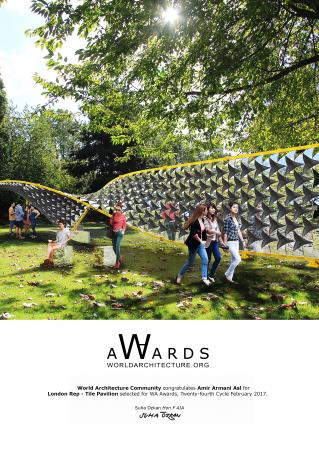
Downloaded 67 times.
Favorited 11 times
